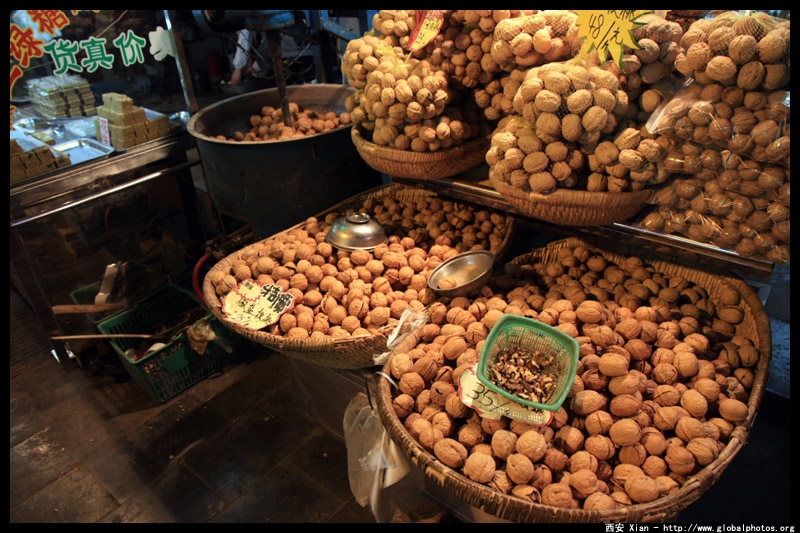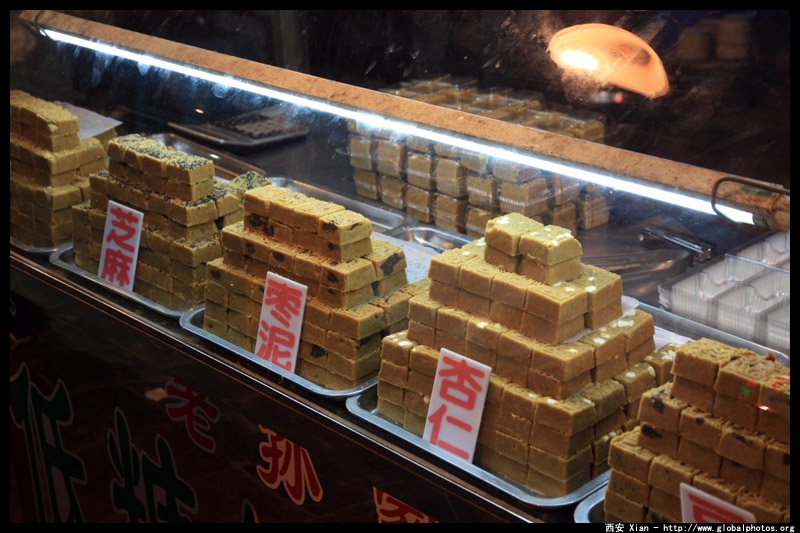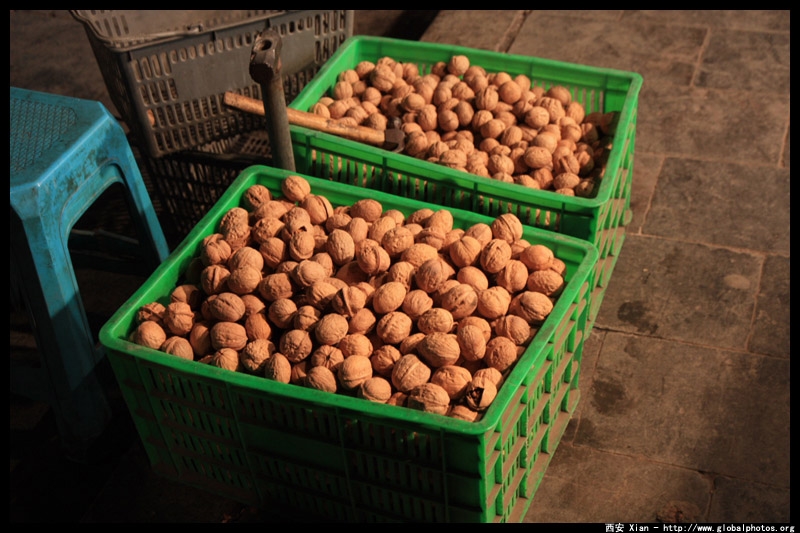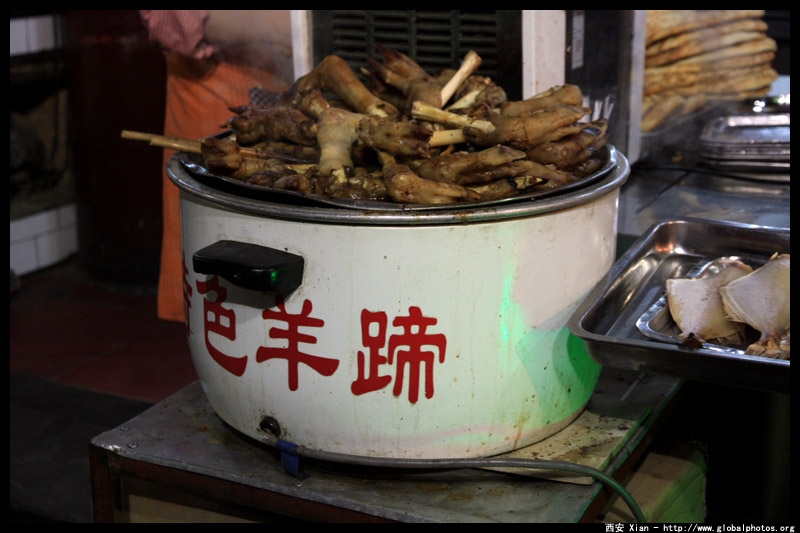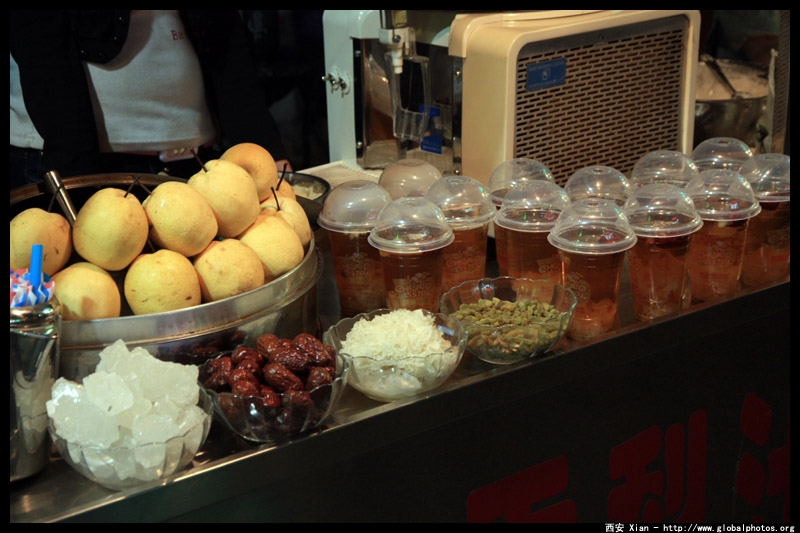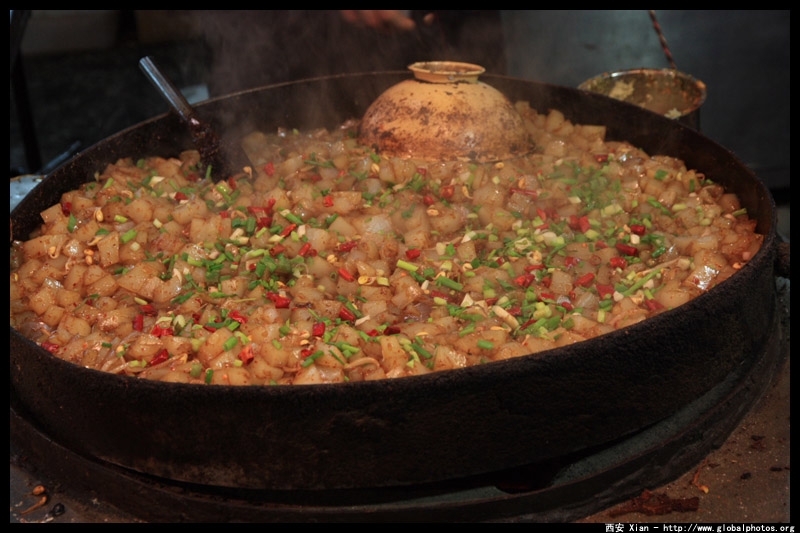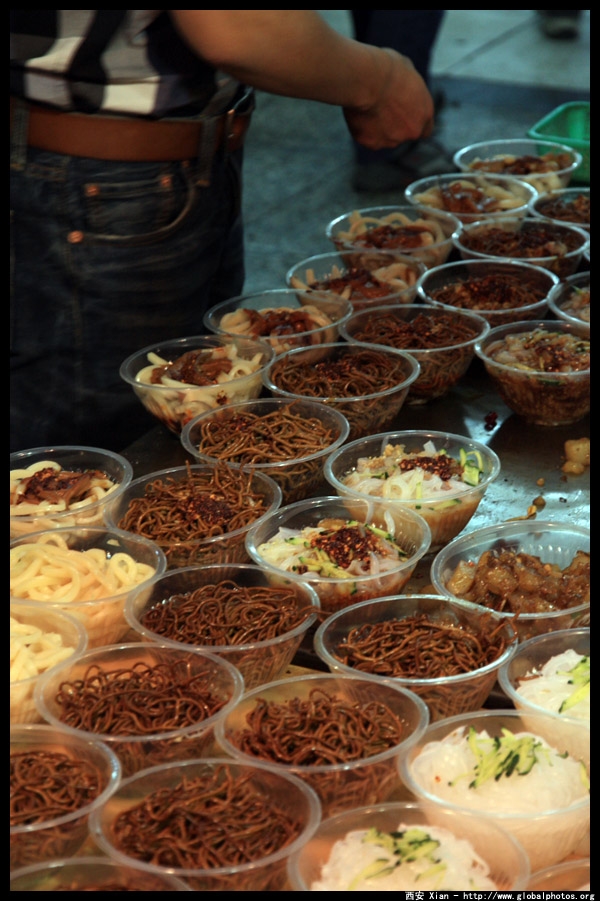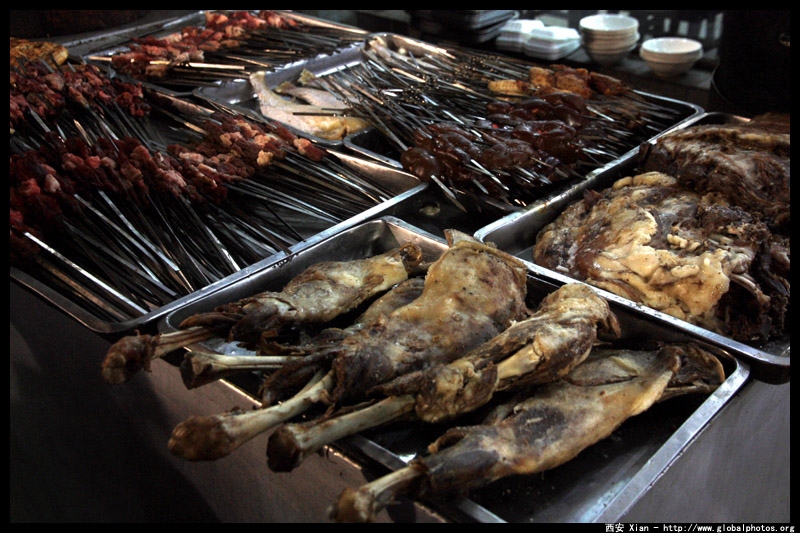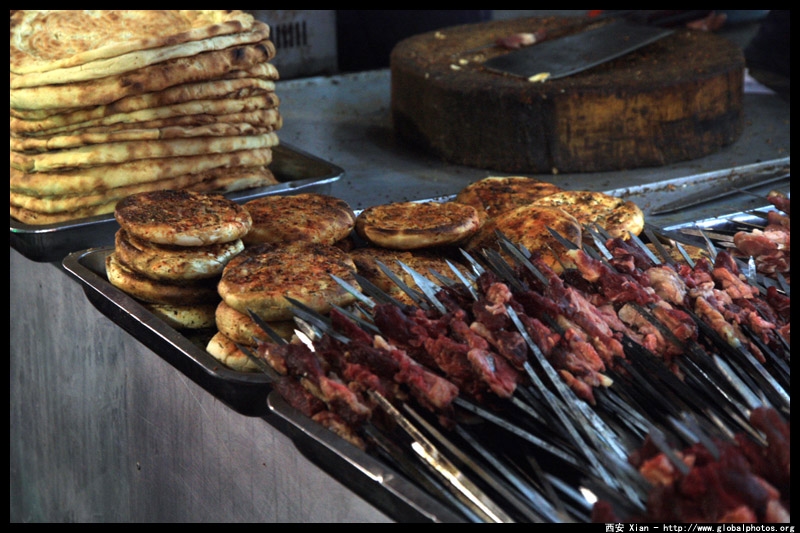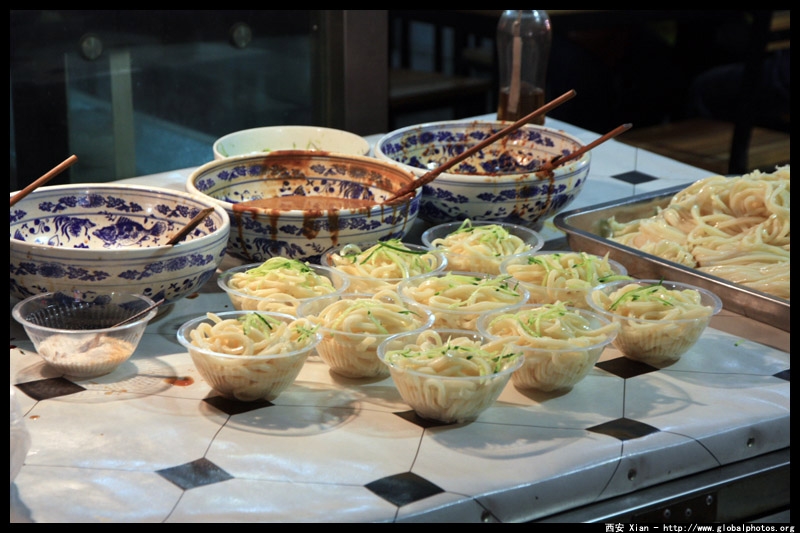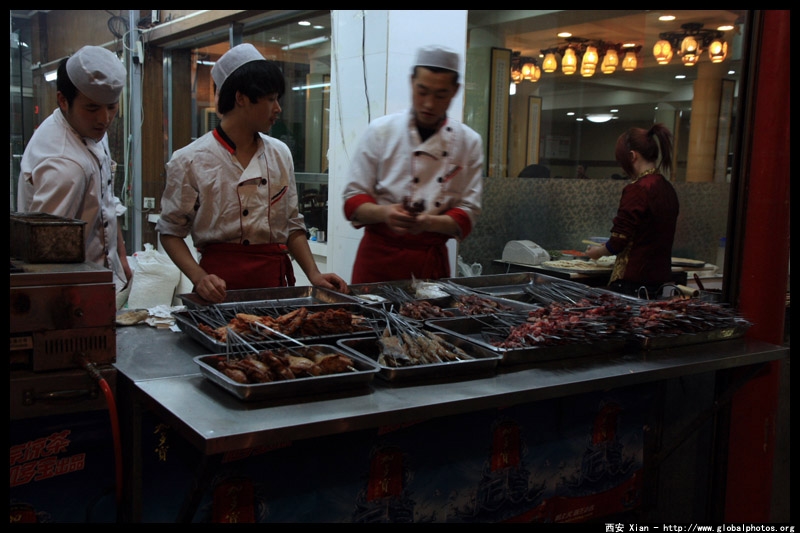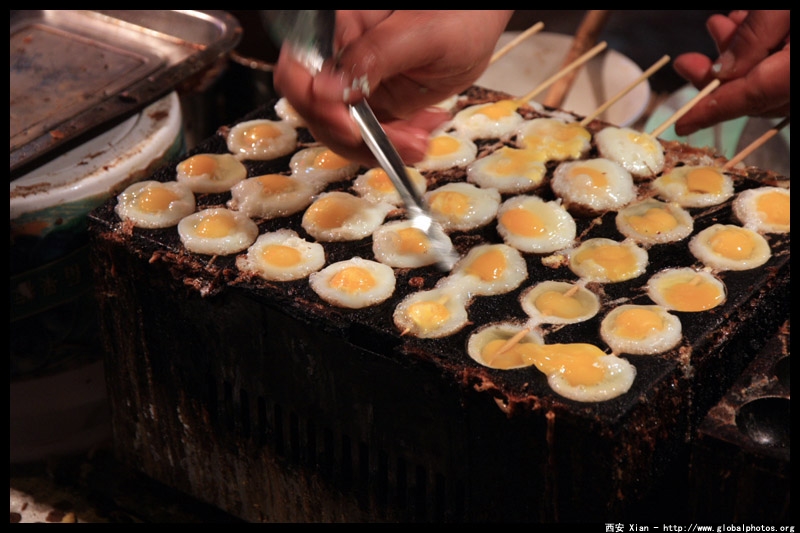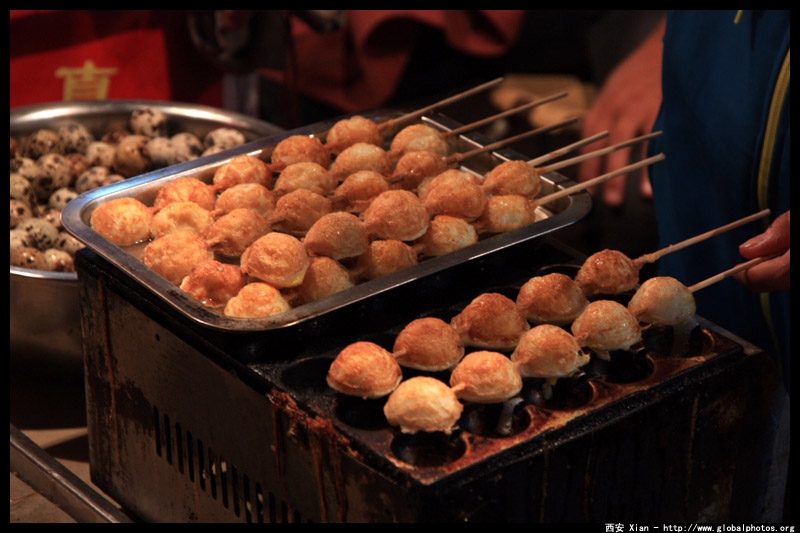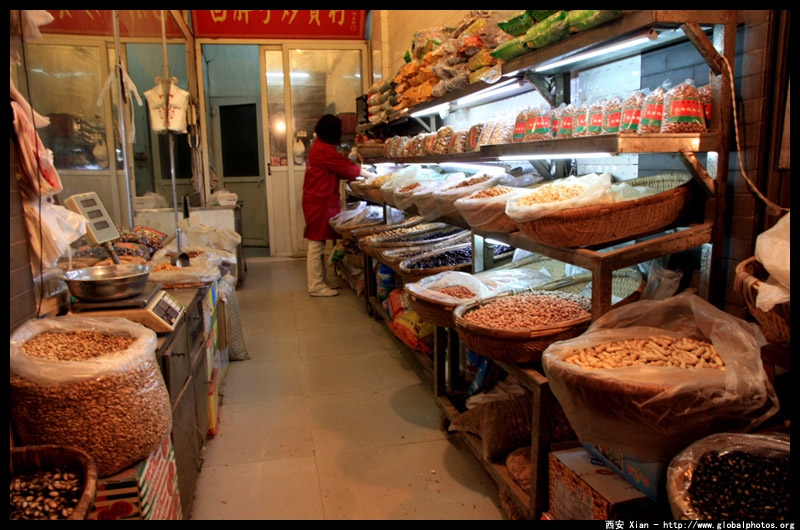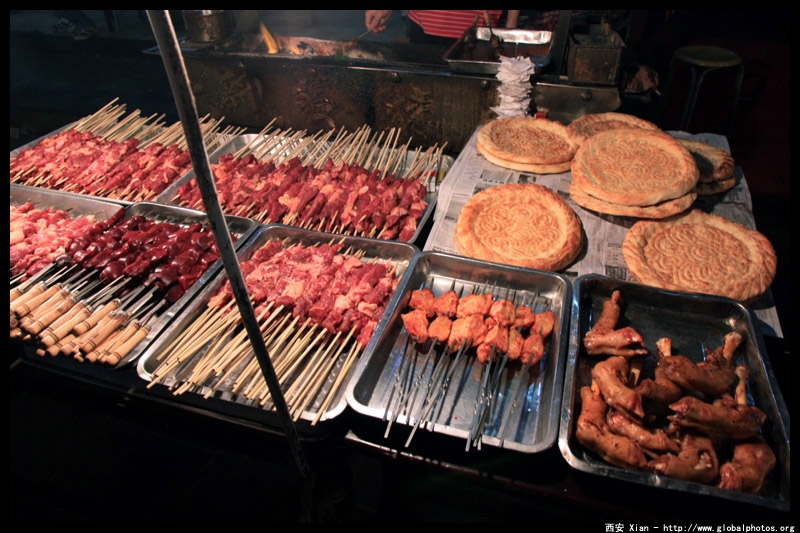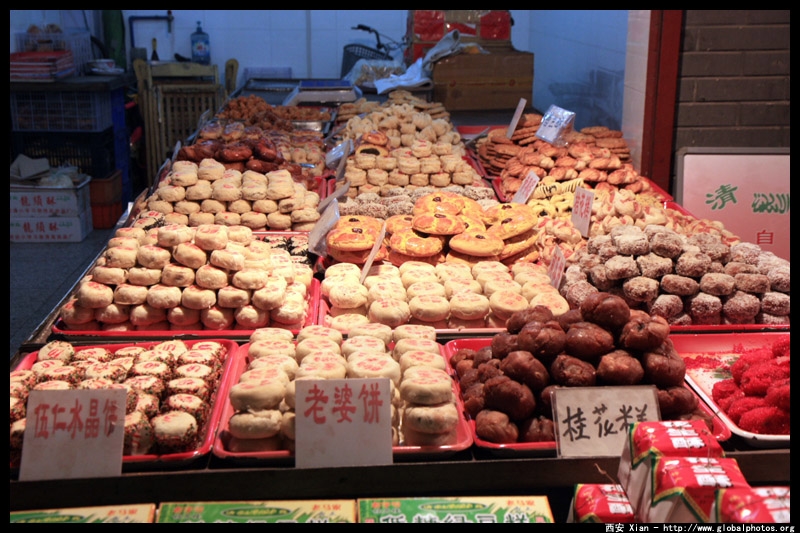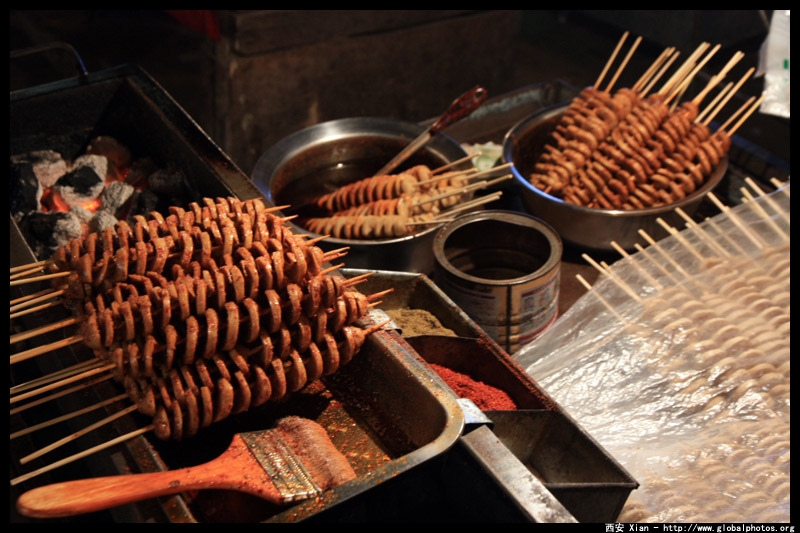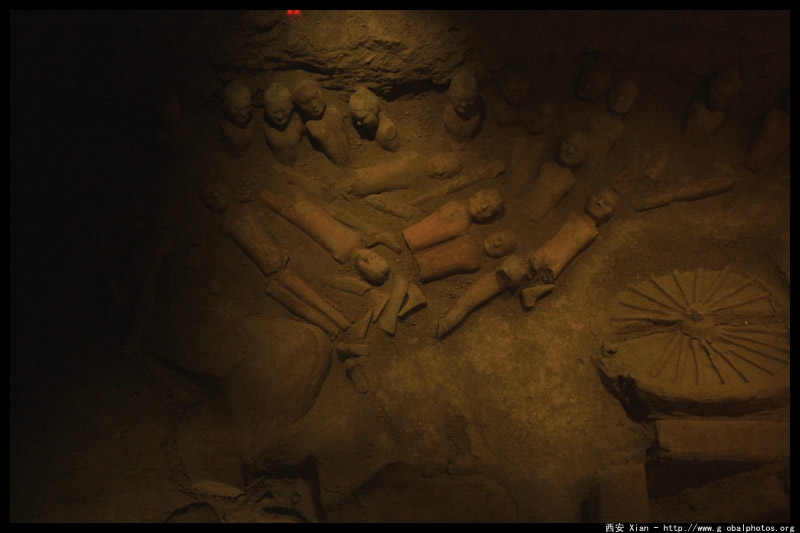hkskyline
Active Member
The Yellow River is the cradle of Chinese civilization. Xian served as the imperial capital for over a thousand years, and was the end of the Silk Road. Overshadowed by Beijing today, its past is nevertheless glorious and some of it is now accessible to visitors.
The full set is on my website : http://www.globalphotos.org/xian.htm
1. The Terra-Cotta Warriors is a large site consisting of 3 pits and a large museum. The museum displays examples of the various statues that have been unearthed in the pits so far.

2. Two chariots were unearthed with horses and riders. All the tour groups gathered around for a look. However, they didn't seem to understand flash should not be used. Quite amazing that they buried these huge sculptures.



5. I was surprised no safety covers were placed in Pit 2, and in the other pits as well. Wouldn't the humidity from all the visitors damage the warriors?




9. The high-ranking officers should be well-fed and their bodies reflect that.

10. The kneeling warrior got a lot of attention. The facial expression is very clear, and the details are amazing.

11. Pit 3 is the smallest one, but it was nevertheless still interesting as they tried to arrange some of the warriors into formation.


13. Pit 1 is the largest and has the most spectacular formation.





18. The warriors were meant to protect Qin Shi Huang's tomb. Although the tomb has been found, it has not yet been excavated. The area is now a huge park, with a surprising number of cherry blossom trees.



21. Back in the city, the Bell Tower sits in the heart of a massive traffic circle where the north-south and east-west axes intersect. Like most of Xian's big attractions, it costs a lot of money to go in. 50 yuan later, I had a ticket for this and also the nearby Drum Tower.
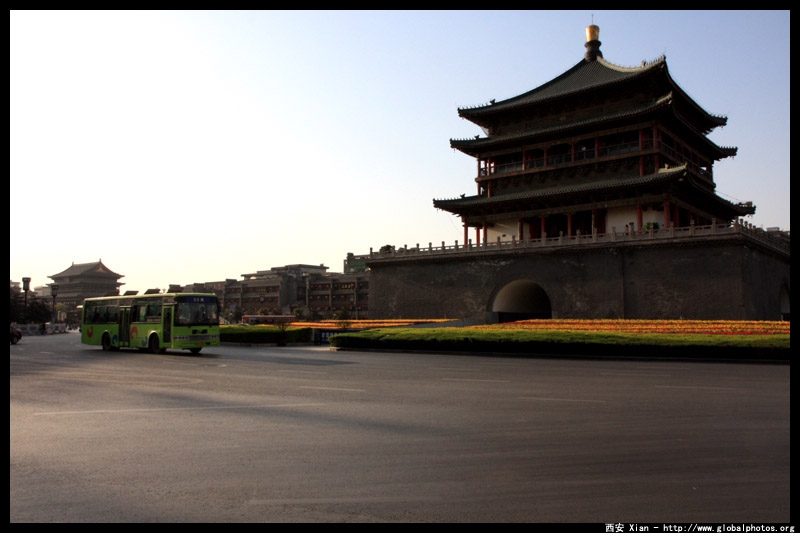
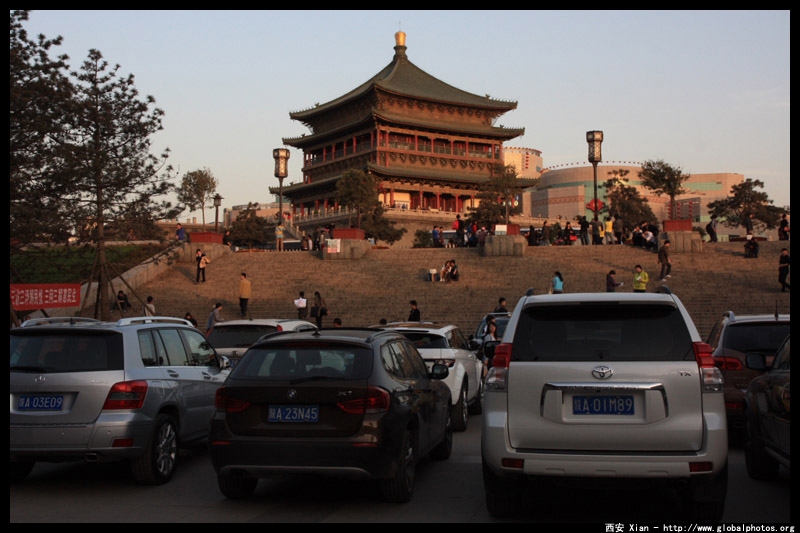
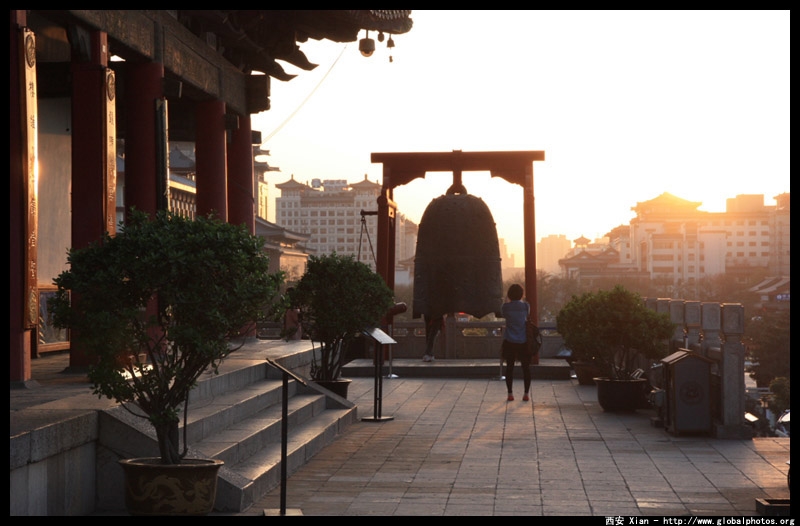



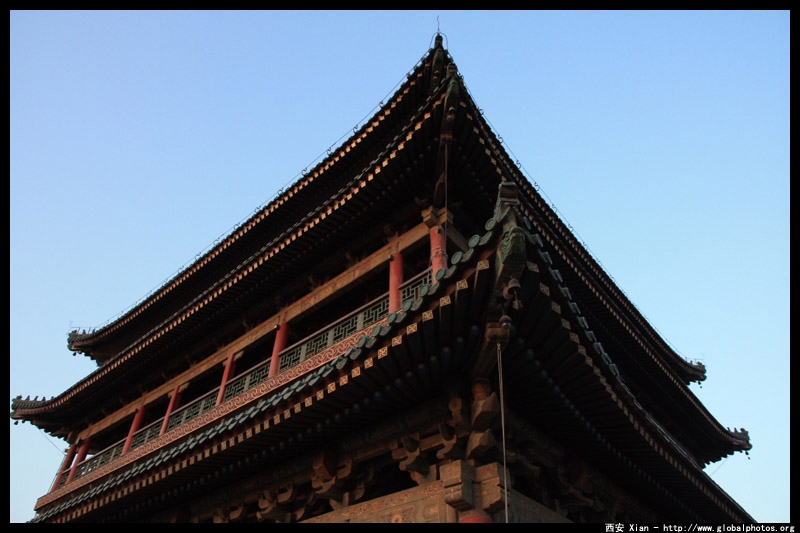
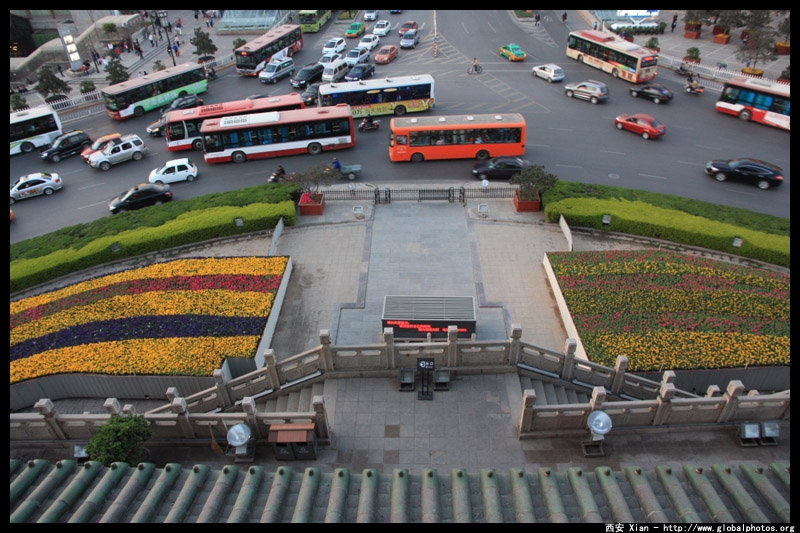
29. The tower isn't tall enough to see the roofs of its neighbours, but it does offer a clear view of the Drum Tower.
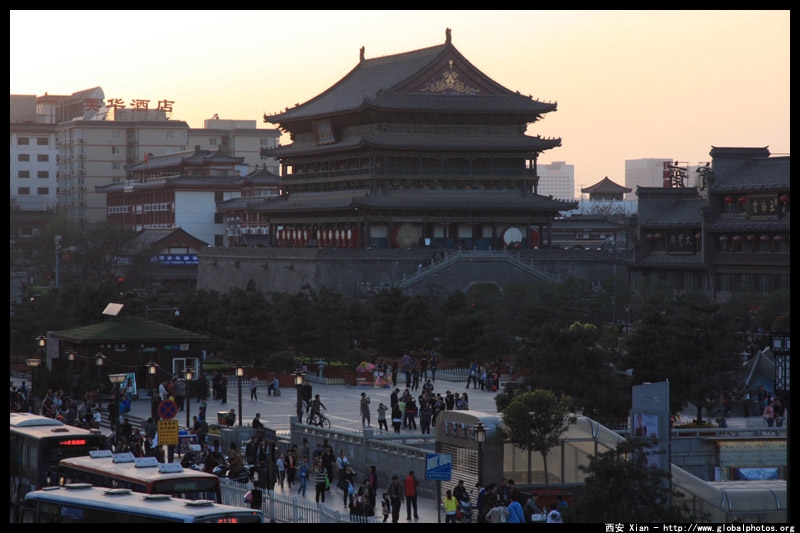
30. Dating from the Ming Dynasty, the Drum Tower was built in the 14th century and features various drums that depict the ancient weather calendar.
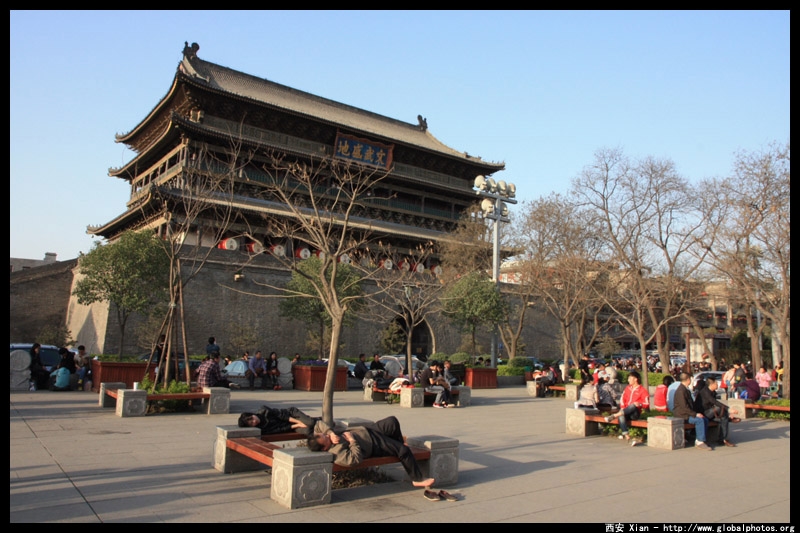
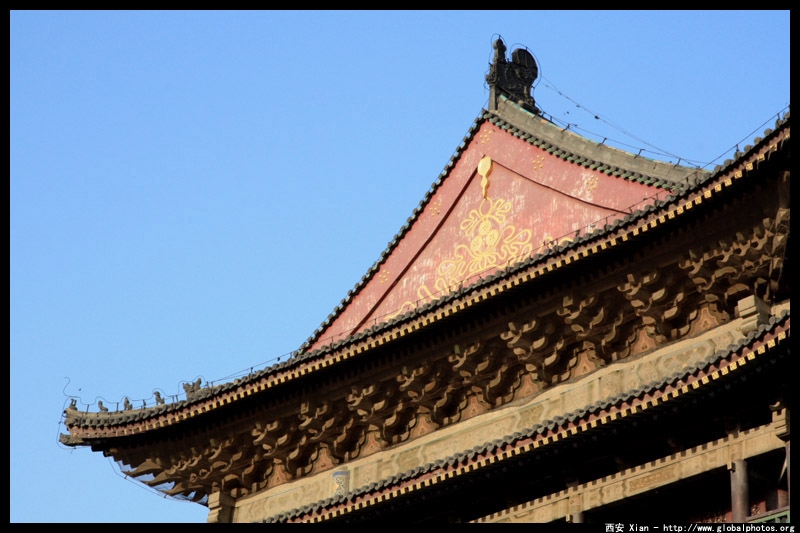
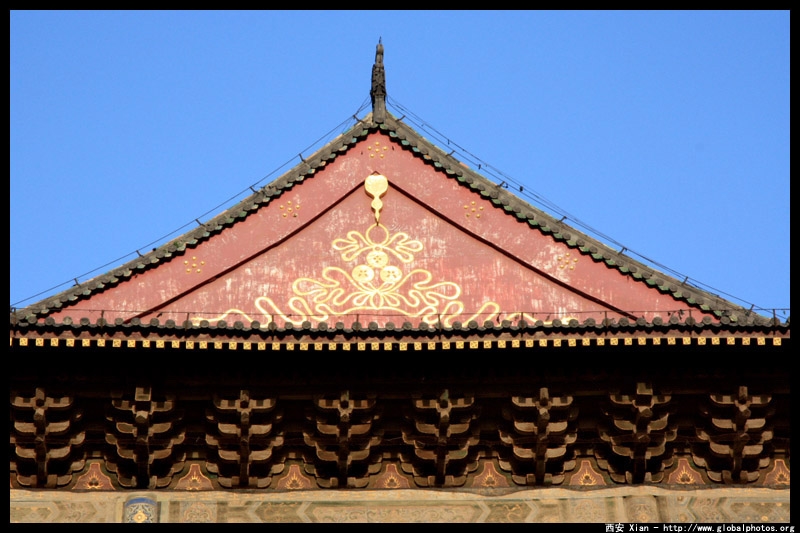

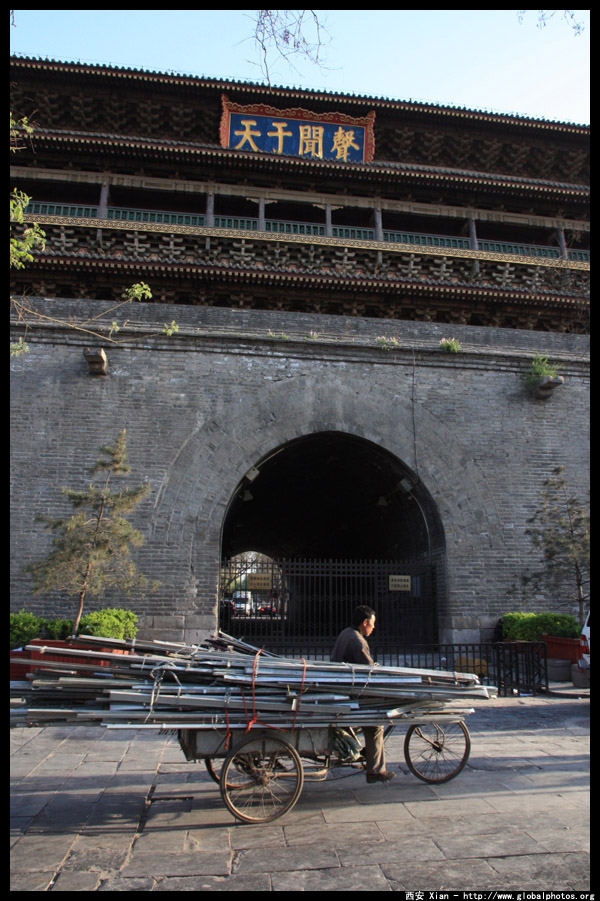
35. Looking back towards the Bell Tower, which seems small compared to its more modern neighbours.
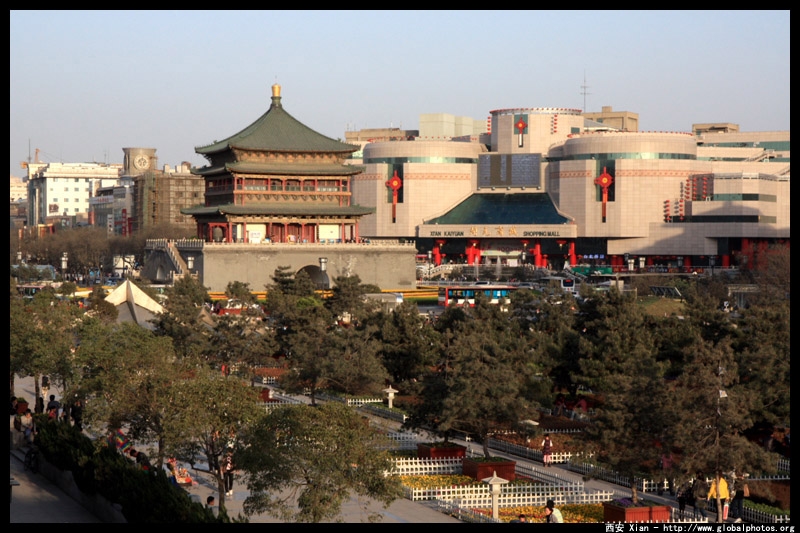
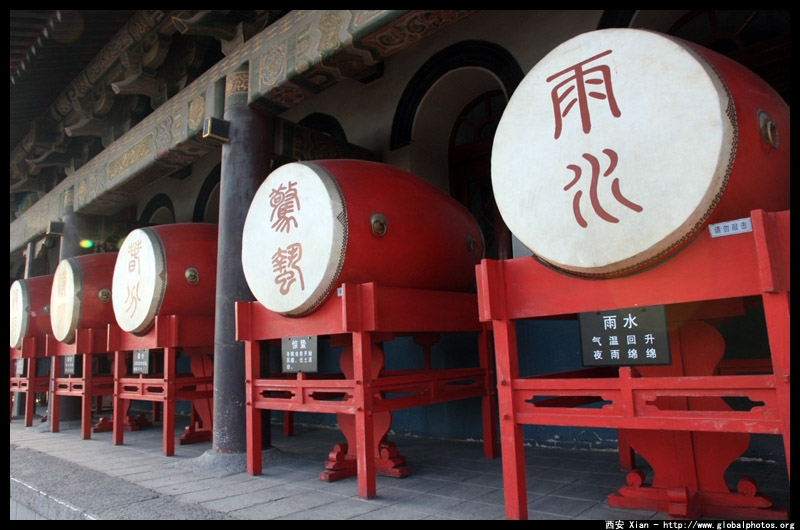
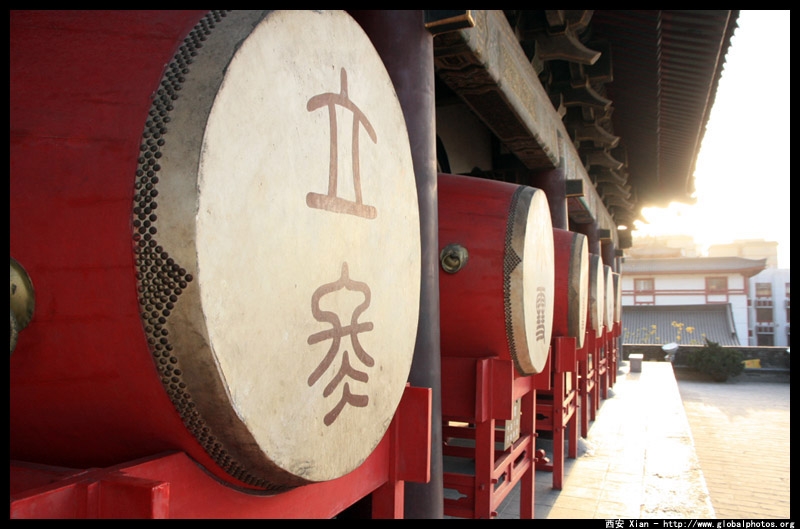
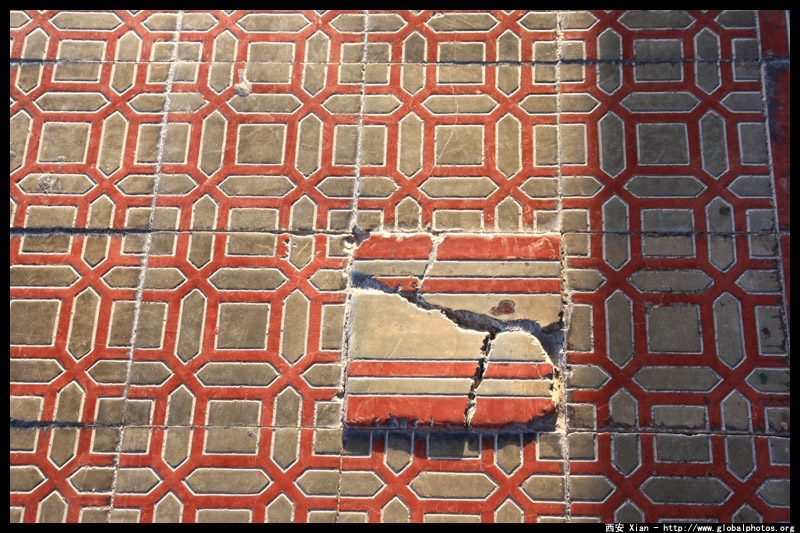
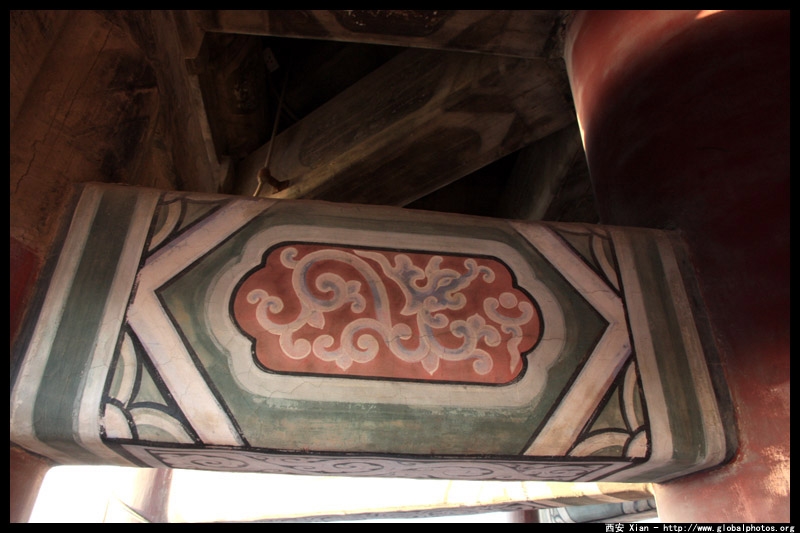
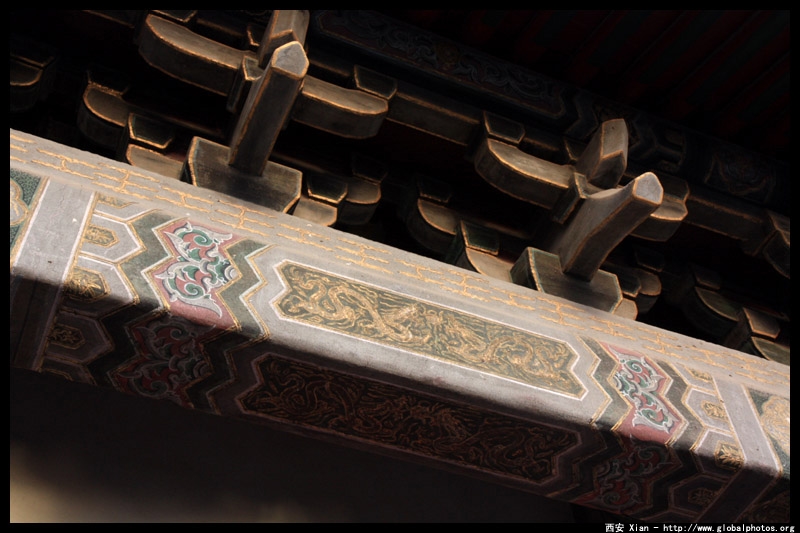
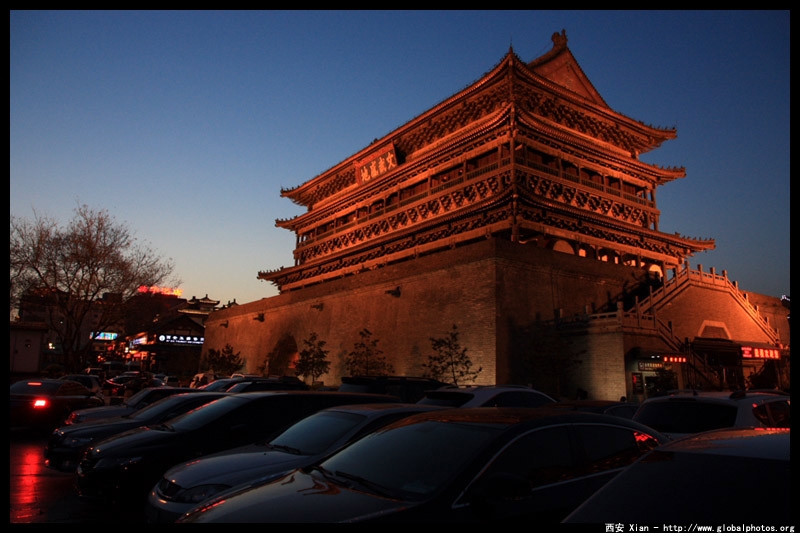
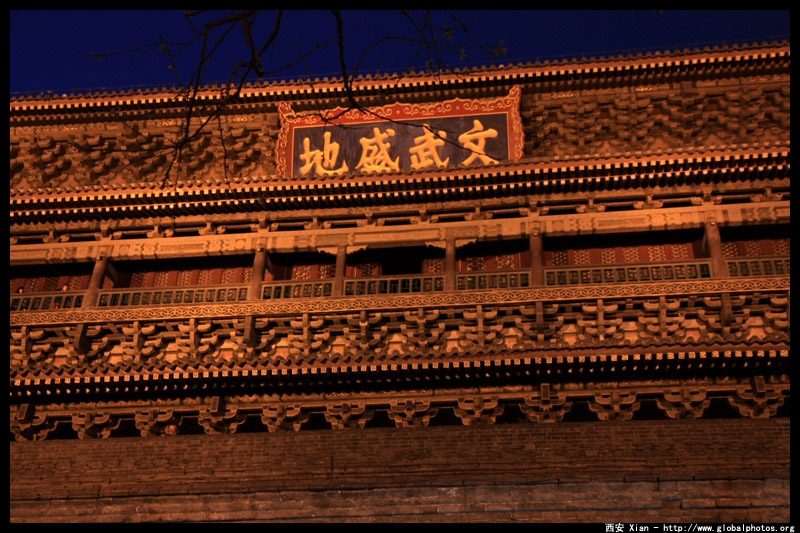
43. Xian's current city wall primarily dates from the Ming dynasty. Well-preserved and intact, the wall itself is quite wide and can easily accomodate both cyclists and pedestrians.


45. 40 yuan later, enter the gate and head up the staircase to the top of the city wall.



48. A renovated street lined with historic architecture, Shuyuanmen pedestrian street specializes in cultural works, including Chinese calligraphy brushes and paintings. While there is a food stall every now and then, the atmosphere is still very cultural.











59. Capture the revolutionary spirit with these thin metal cups. Pay 10 yuan.



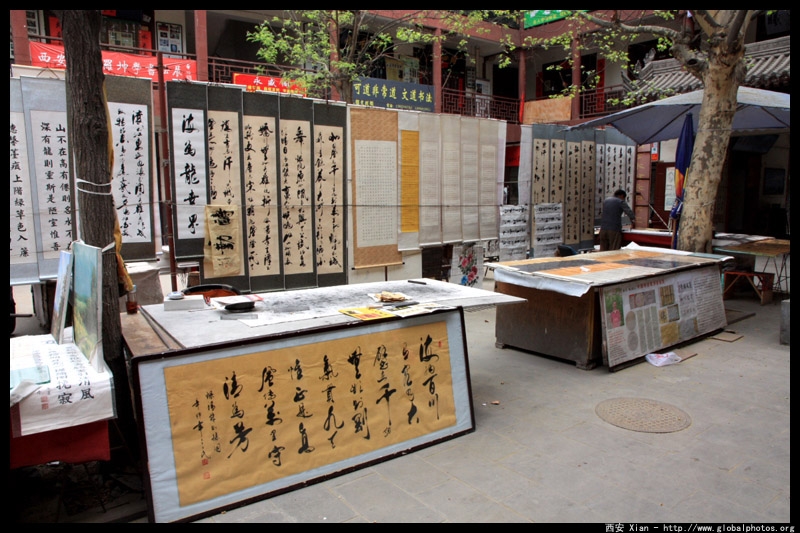






The full set is on my website : http://www.globalphotos.org/xian.htm
1. The Terra-Cotta Warriors is a large site consisting of 3 pits and a large museum. The museum displays examples of the various statues that have been unearthed in the pits so far.

2. Two chariots were unearthed with horses and riders. All the tour groups gathered around for a look. However, they didn't seem to understand flash should not be used. Quite amazing that they buried these huge sculptures.



5. I was surprised no safety covers were placed in Pit 2, and in the other pits as well. Wouldn't the humidity from all the visitors damage the warriors?




9. The high-ranking officers should be well-fed and their bodies reflect that.

10. The kneeling warrior got a lot of attention. The facial expression is very clear, and the details are amazing.

11. Pit 3 is the smallest one, but it was nevertheless still interesting as they tried to arrange some of the warriors into formation.


13. Pit 1 is the largest and has the most spectacular formation.





18. The warriors were meant to protect Qin Shi Huang's tomb. Although the tomb has been found, it has not yet been excavated. The area is now a huge park, with a surprising number of cherry blossom trees.



21. Back in the city, the Bell Tower sits in the heart of a massive traffic circle where the north-south and east-west axes intersect. Like most of Xian's big attractions, it costs a lot of money to go in. 50 yuan later, I had a ticket for this and also the nearby Drum Tower.








29. The tower isn't tall enough to see the roofs of its neighbours, but it does offer a clear view of the Drum Tower.

30. Dating from the Ming Dynasty, the Drum Tower was built in the 14th century and features various drums that depict the ancient weather calendar.





35. Looking back towards the Bell Tower, which seems small compared to its more modern neighbours.








43. Xian's current city wall primarily dates from the Ming dynasty. Well-preserved and intact, the wall itself is quite wide and can easily accomodate both cyclists and pedestrians.


45. 40 yuan later, enter the gate and head up the staircase to the top of the city wall.



48. A renovated street lined with historic architecture, Shuyuanmen pedestrian street specializes in cultural works, including Chinese calligraphy brushes and paintings. While there is a food stall every now and then, the atmosphere is still very cultural.











59. Capture the revolutionary spirit with these thin metal cups. Pay 10 yuan.




















